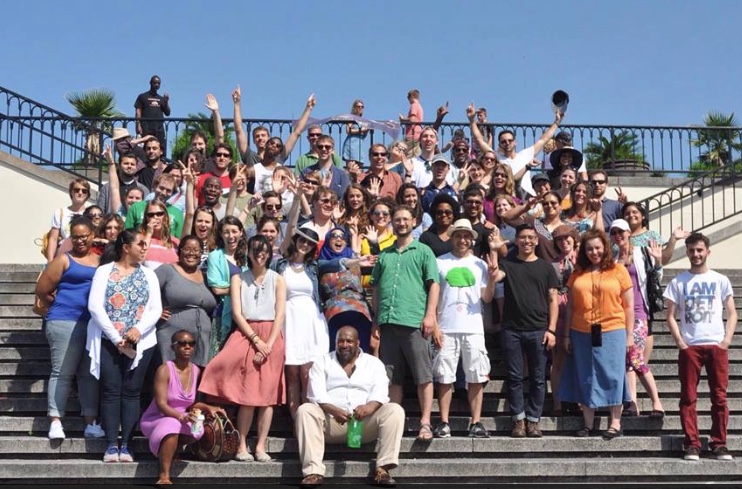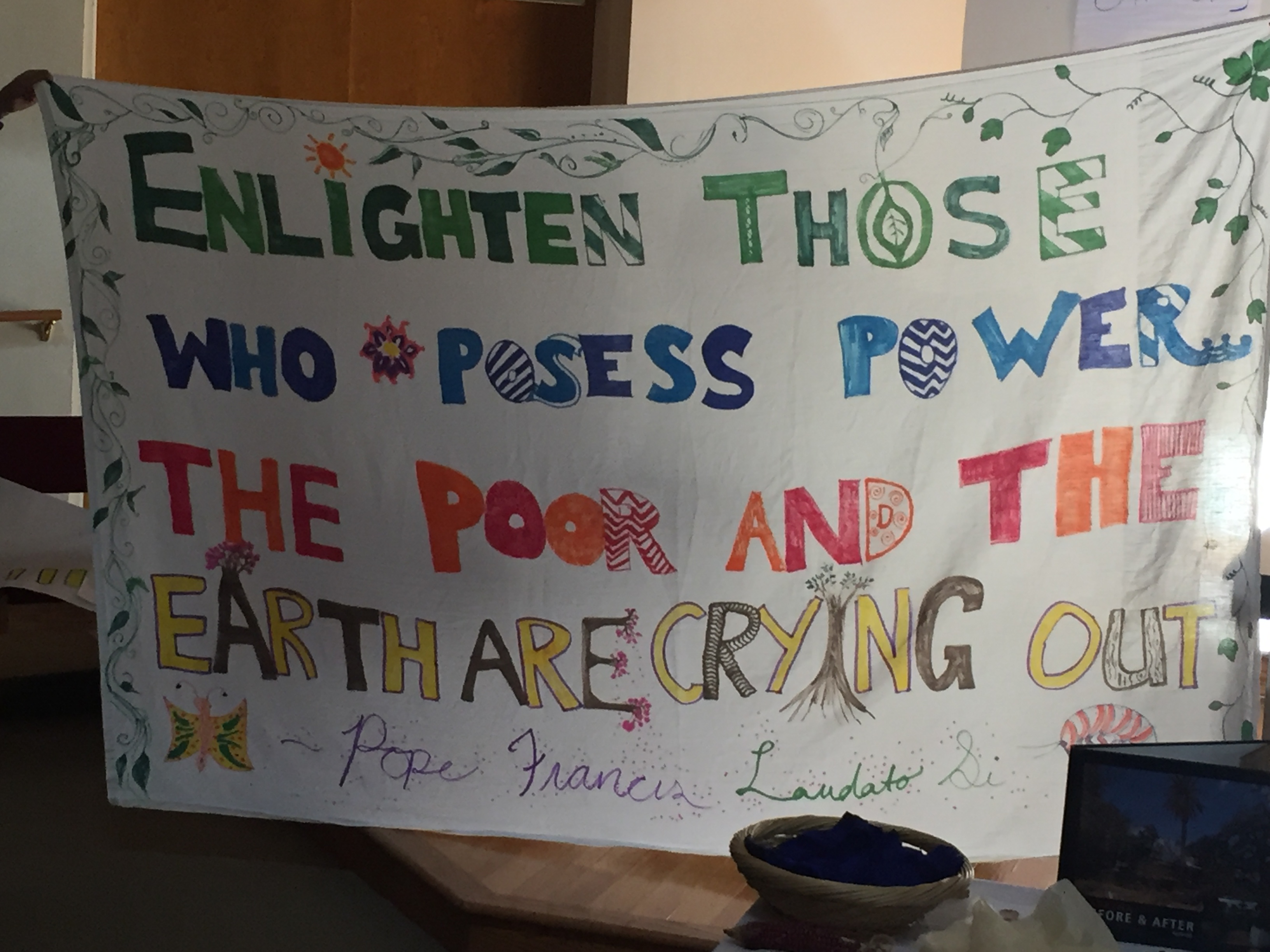Enlighten those who possess power; the poor and the Earth are crying out. -Pope Francis, Laudato Si
 Over fifty millenials from across North America gathered in New Orleans alongside facilitators from GreenFaith, an organization that seeks to inspire, educate, and mobilize people of faith on environmental issues. We gathered there for GreenFaith's 2016 Emerging Leaders Convergence called “Coming Together for Climate Justice.” I consider myself both spiritual and religious; as an ordained lay Buddhist minister and an activist with Sierra Club and other organizations, I found myself curious about what I might learn at a conference designed to help us put our beliefs into action from a grounding in our faith and spirituality.
Over fifty millenials from across North America gathered in New Orleans alongside facilitators from GreenFaith, an organization that seeks to inspire, educate, and mobilize people of faith on environmental issues. We gathered there for GreenFaith's 2016 Emerging Leaders Convergence called “Coming Together for Climate Justice.” I consider myself both spiritual and religious; as an ordained lay Buddhist minister and an activist with Sierra Club and other organizations, I found myself curious about what I might learn at a conference designed to help us put our beliefs into action from a grounding in our faith and spirituality.
On Monday, June 23rd, we gathered in the chapel at Tulane University. Each of us brought some water from our homes, and Beata, who comes from New Mexico, led us in a ceremony honoring the four directions and celebrating the water. We each shared the story of our water: the droughts, the floods, the pollution that the lands we came from have been experiencing. Because we represented many different religions and spiritual practices, this ritual and others held throughout the retreat were interfaith in nature to invite all to participate. his commencement highlighted to me the value of ritual in sharing our stories with others and in creating meaning and a sense of the sacred.
On Tuesday, we focused our attention on learning about the history of New Orleans and the impact and aftermath of Hurricane Katrina. Spending time at the Louisiana State Museum, I learned about the levee systems and the repairs since the hurricane. Since the hurricane, the Army Corps put “I” levees in place in Lakeview, a wealthy predominantly white neighborhood, whereas the Corp installed “T” levees in the Lower 9th Ward – an inferior type of levee system. The impacts of racism and classism were obvious in the response to Katrina, as well as reconstruction following the storm. Later, we heard the stories of four Katrina survivors who demonstrated great persistence and love even in the face of the challenges and destruction that the hurricane posed, which included for one person the death of his mother during the storm.
On Wednesday, we travelled to the Houma area and met with David and Koy from BISCO (Bayou Interfaith Shared Community Organizing) who shared with us the stories of the locals in the wake of Katrina and the 2010 BP oil spill. We visited with Dr. Nancy Rablais at LUMCON (Lousiana Universities Marine Consortium) who educated us on the Gulf of Mexico dead zone, a seasonal zone of low oxygen created largely by fertilizer runoff into the Mississippi River, which then stimulates algal blooms in the Gulf. That afternoon, we went to the Isle de Jean Charles, a small island settled generations ago by Cajun Indigenous people. They have been designated the first US climate refugees BY although some residents have no desire to leave their home for drier land. Land are is quickly being lost there as the sea inundates the land due to complex factors of subsidence, the creation of shipping channels, and sea level rise.

We concluded the convergence on Friday morning with a ceremony under the broad canopy of a live oak tree behind Newcomb Hall, thanking it for its shade, pouring the water that we had all brought on the ground to nourish it, and sharing words of what we learned and experienced over the few days we shared together. Now a few weeks after, I still feel enthusiastic and excited by the possibilities of framing the many environmental crises we face from a faith perspective.